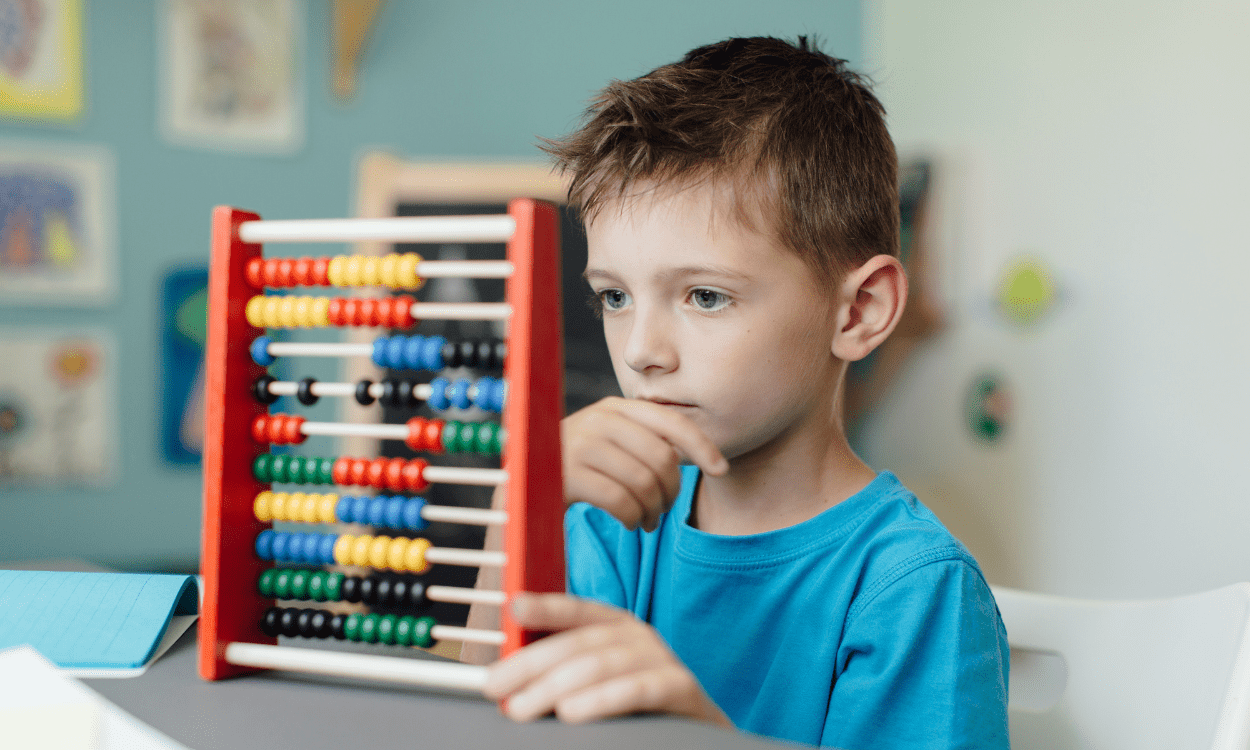As parents of young children, it’s natural to wonder about the learning journey your child is experiencing, especially when it comes to math. If you’ve observed your 4-year-old thriving in their Montessori classroom, you’re likely already seeing the magic of this hands-on approach. But what exactly does early math look like in a Montessori setting, and how does it evolve as children grow?
Montessori math is centered on a key principle: concrete to abstract learning. This means that children begin their math journey by physically engaging with materials they can touch, manipulate, and explore. Over time, they transition from these tangible tools to more abstract mathematical concepts—eventually solving problems in their heads or on paper. Let’s break down how this approach unfolds at different stages of your child’s Montessori experience.
The Foundation: Concrete Learning in Early Childhood
In the early childhood years (around ages 3 to 6), Montessori math is all about providing children with concrete experiences. These are real objects and materials that they can physically interact with. Even before children can count, they begin to grasp the concept through materials like the number rods. These colorful wooden rods, arranged in a stair-step pattern, help children understand the idea of quantity and order as they move from one rod (representing “1”) up to ten.
As children gain confidence in counting, they move on to materials like the spindle box. This simple tool teaches them how to place the correct number of wooden spindles into compartments labeled 1 through 9, further reinforcing their understanding of one-to-one number correspondence. Sandpaper numbers also play an important role here. These tactile materials allow children to trace the shapes of numbers, giving them the skills they need to later write them on paper.
When children are ready to explore basic math operations, the golden bead material comes into play. These beads represent numbers in a way that children can hold and manipulate: a single bead represents “1,” ten beads strung together represent “10,” and so on. This material provides a tangible representation of numbers that helps children grasp more complex ideas, like place value. As they practice addition, subtraction, multiplication, and division with the golden beads, they develop a deep understanding of how numbers work—and they do so in a way that feels natural and engaging.
Moving Toward Abstraction: The Transition to Elementary
As children move from the primary years into lower elementary (around age 6 and beyond), they begin to transition to more abstract materials. This shift is gradual, depending on each child’s readiness, but the core idea remains the same: learning through manipulation and visualization.
For example, the stamp game allows children to continue practicing all four operations—addition, subtraction, multiplication, and division—using small colored tiles instead of physical beads. Each tile represents a different place value, and while the pieces are all the same size, the color and labeling help children understand the relationships between them. With this material, children can work with numbers up to the thousands and begin practicing more complex operations.
Interestingly, some Montessori materials, like the bead chains, are used throughout a child’s journey, from the primary years to upper elementary. In the early years, bead chains help children learn to count and skip count. In elementary years, they are used to memorize multiplication tables, and eventually, they help children understand concepts like squaring and cubing numbers. This long-term engagement with materials deepens understanding and reinforces concepts over time.
Beyond Operations: Geometry and Fractions
Montessori math isn’t just about learning to manipulate numbers. Early on, children also explore geometry and fractions. For instance, in the primary classroom, children begin by learning the names of geometric solids—not just cubes and spheres, but more complex shapes like square base pyramids and rectangular prisms. As they move into elementary school, they build on these foundations by studying angles, triangles, and polygons, often with hands-on materials to deepen their understanding.
The concept of fractions is also introduced early on. Montessori uses simple, concrete materials like fraction insets to introduce first graders to fractions. These tools allow children to visualize fractions and understand how they relate to division. By the time they are in third grade, many Montessori students are confidently multiplying and dividing fractions, building on the strong foundational skills they’ve developed over the years.
One of the most remarkable aspects of Montessori math is its progressive nature. The materials are designed to evolve with the child’s growing cognitive abilities, offering increasingly abstract representations of math concepts as they mature. With this hands-on, tactile approach, Montessori students build a deep, intuitive understanding of math—one that goes beyond memorization and rote learning.
As your child progresses through their Montessori education, you’ll see them move from the concrete materials of early childhood to more abstract thinking and problem-solving. This gradual transition helps them develop both a solid foundation and a genuine love for math that will serve them well in the years to come.

